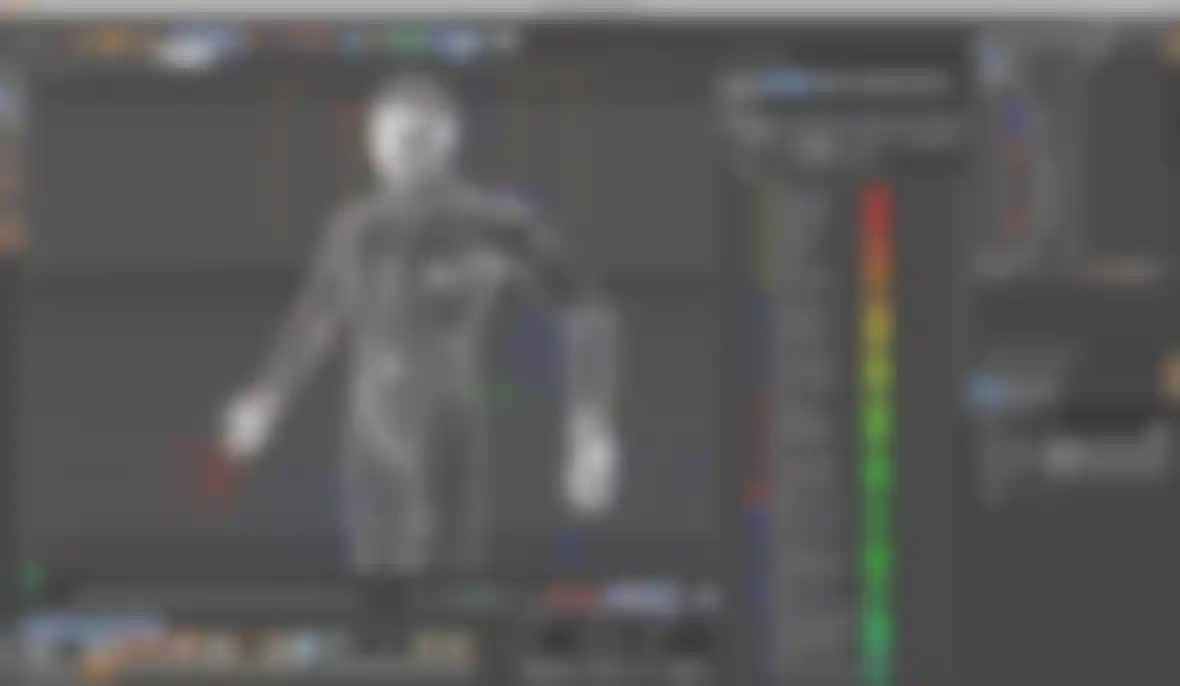
Body Works How an artist who once dreamed of being a bodybuilder became a successful medical animator thanks to Cinema 4D and Arnold Schwarzenegger.
Apoptosis. Chances are you aren't familiar with this word. But your body is no stranger to the process. Apoptosis, also known as programmed cell death, is a normal system for getting rid of unneeded, aged or damaged cells. And it is estimated that up to about 70 billion cells die each day through apoptosis in the average adult. Cancer researchers are currently studying apoptosis in the hopes of finding ways to turn this natural process loose on cancer cells to target and kill them.
It's groundbreaking work that's getting a lot of attention these days. So when medical animator Nick Shotwell was hired by Indiana-based DWA Healthcare Communications Group to increase the company's capabilities and help them move from illustration into animation, he opted to create an apoptosis animation that could potentially attract new clients. The first hurdle? Convincing the company to buy a copy of Maxon Cinema 4D, and then learning to use it in ways he'd never attempted to before. And he needed to learn fast.


"When I bought Cinema 4D through work, we got an upgrade that included access to Cineversity's tutorials and one-on-one training," Shotwell recalls. "I contacted Maxon and they told me that one of their lead trainers lives here in town and could help me." That trainer was digital game artist and designer Darrin Frankovitz who, as it turned out, lived very close to Shotwell. The two met and over the next two years did web-based trainings every few months.
MoGraph was the main tool Shotwell needed to learn for the apoptosis animation. In particular, MoGraph came in handy when he was attempting to depict a cell's surface. "There are all of these little spheres on the surface of a cell and that's a tricky thing to do for all medical animators, so you have to fake it somehow or you'll crash your machine," he explains. Frankovitz showed him how to use clones more densely up by the camera while making the most of depth of field.
Like other medical animators, Shotwell turned to the open source plug-in ePMV (embedded Python Molecular Viewer) when building and animating molecules in Cinema 4D. Created by Graham Johnson and Ludovic Autin of Scripps Research Institute, ePMV allows users to run molecular modeling software inside 3D animation applications.


After finishing the apoptosis animation, Shotwell moved on to another challenging project that is still in progress - rigging a complex model of the human anatomy that was purchased online from Zygote. Again, he turned to Frankovitz for help. "Darrin has given me tips that you just can't get from a video," he says. "And I needed a lot of help because I had no idea what I was doing with rigging when I started this."
The decision to take on the challenge of rigging such a difficult model of the human anatomy was not just motivated by work. Before becoming a medical animator, Shotwell had considered a career in bodybuilding, having been inspired in part by Arnold Schwarzenegger. As fate would have it, Schwarzenegger turned out to be the guiding force behind Shotwell's medical animation career.
After meeting Shotwell and seeing his artwork, Schwarzenegger was so impressed that he commissioned additional work from Shotwell. Shotwell met Schwarzenegger at a prominent bodybuilding and sports event and presented his idol with a montage of portraits he'd drawn of him. Soon after, he got a call from Schwarzenegger's asking if he could create some more artwork for him. "It was amazing," recalls Shotwell. "He was my number-one idol and it meant a lot to me that he thought I was a talented artist. Had I not met him, I don't know if I would have had the confidence to believe I could do art for a living and become a medical animator," recalls Shotwell.
Read the full-length feature on this project on Renderosity:
http://www.renderosity.com/news.php?viewStory=16323
